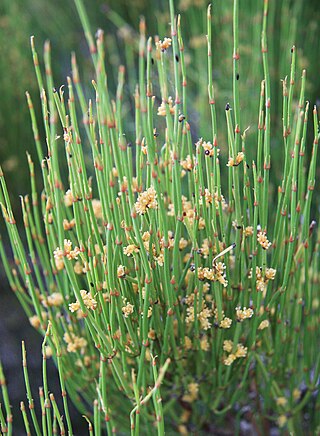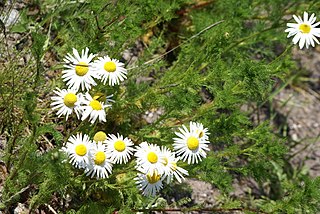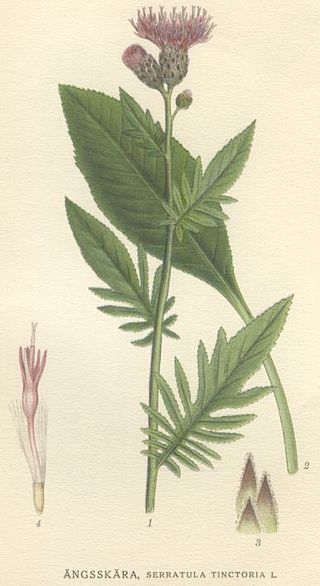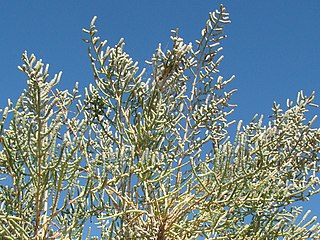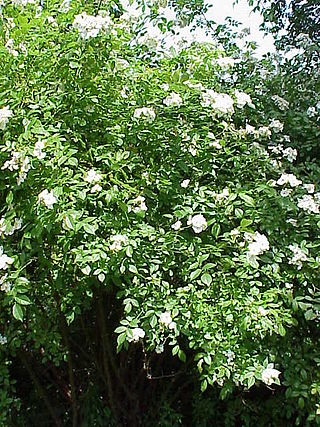| Horaninovia | |
|---|---|
 | |
| Horaninovia anomala named as Salsola anomala in Eichwald | |
| Scientific classification | |
| Kingdom: | Plantae |
| Clade: | Tracheophytes |
| Clade: | Angiosperms |
| Clade: | Eudicots |
| Order: | Caryophyllales |
| Family: | Amaranthaceae |
| Genus: | Horaninovia Fisch. & C.A.Mey. |
Horaninovia is a genus of flowering plants belonging to the family Amaranthaceae. [1] It also belongs to the tribe Salsoleae as well as in the subfamily Salsoloideae. [2]
They are herbaceous annuals, with dichotomous (forked into two equal branches) or opposite arranged branches. They have opposite or alternate spaced leaves which are acicular (slender or needle-shaped) or terete (circular in cross-section) and have a widened base. It has either solitary flowers or they are clustered in glomerules (groups) at the leaf axils (joints). The flowers have a 4 or parted perianth, with the segments being broadly ovate or oblong shaped. They are membranous or leathery in form. It has a cupular disk (of petals), with semi-orbicular lobes. In-between the lobes of the disk are stamens (5 in total). The anthers are cylindrical to broadly elliptic in shape, with or without an awn-like appendage. It has a very short style and the stigma is capitulate and 2- or 3-lobed. It has depressed globose shaped seed. [3]
Its native range is from Iran to Xinjiang (in China). It is found in Afghanistan, Iran, Kazakhstan, Tajikistan, Turkmenistan, Uzbekistan and Xinjiang. [1]
The genus name of Horaninovia is in honour of Pavel Gorianinov (1796–1866), a Russian botanist with an interest on fungus and ferns and was a professor at the medical academy in Saint Petersburg, [4] and it was first described and published in Enum. Pl. Nov. Vol.1 on page 10 in 1841. [1]
Known species: [1]
- Horaninovia anomala (C.A.Mey.) Moq.
- Horaninovia capitata Sukhor.
- Horaninovia excellens (Iljin) Iljin
- Horaninovia minor Schrenk
- Horaninovia platyptera Charif & Aellen
- Horaninovia pungens (Gilli) Botsch.
- Horaninovia ulicina Fisch. & C.A.Mey
Horaninovia ulicina is the type species, [5] it is found on sand dunes in Afghanistan, Iran, Kazakhstan and Turkmenistan. [6]

